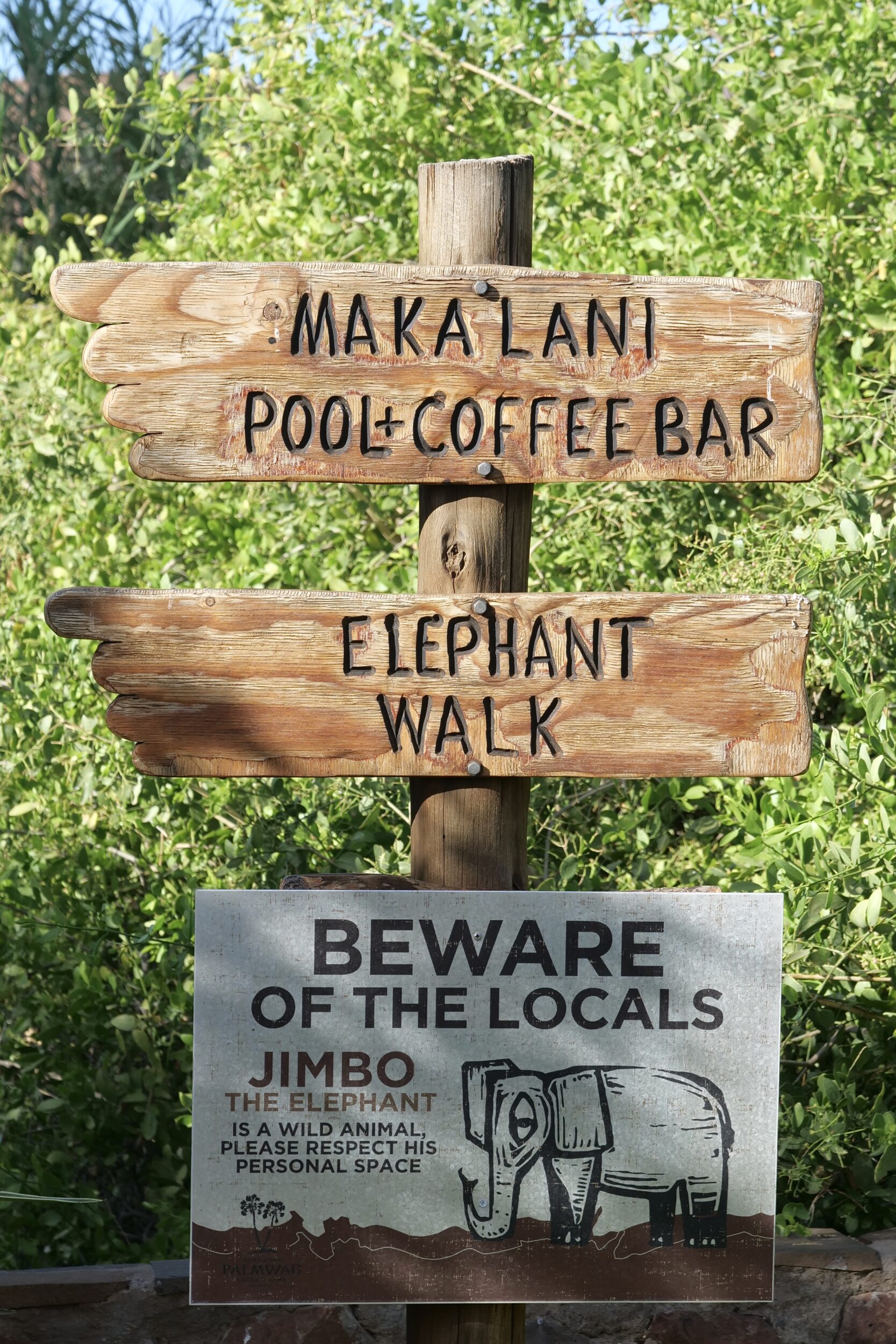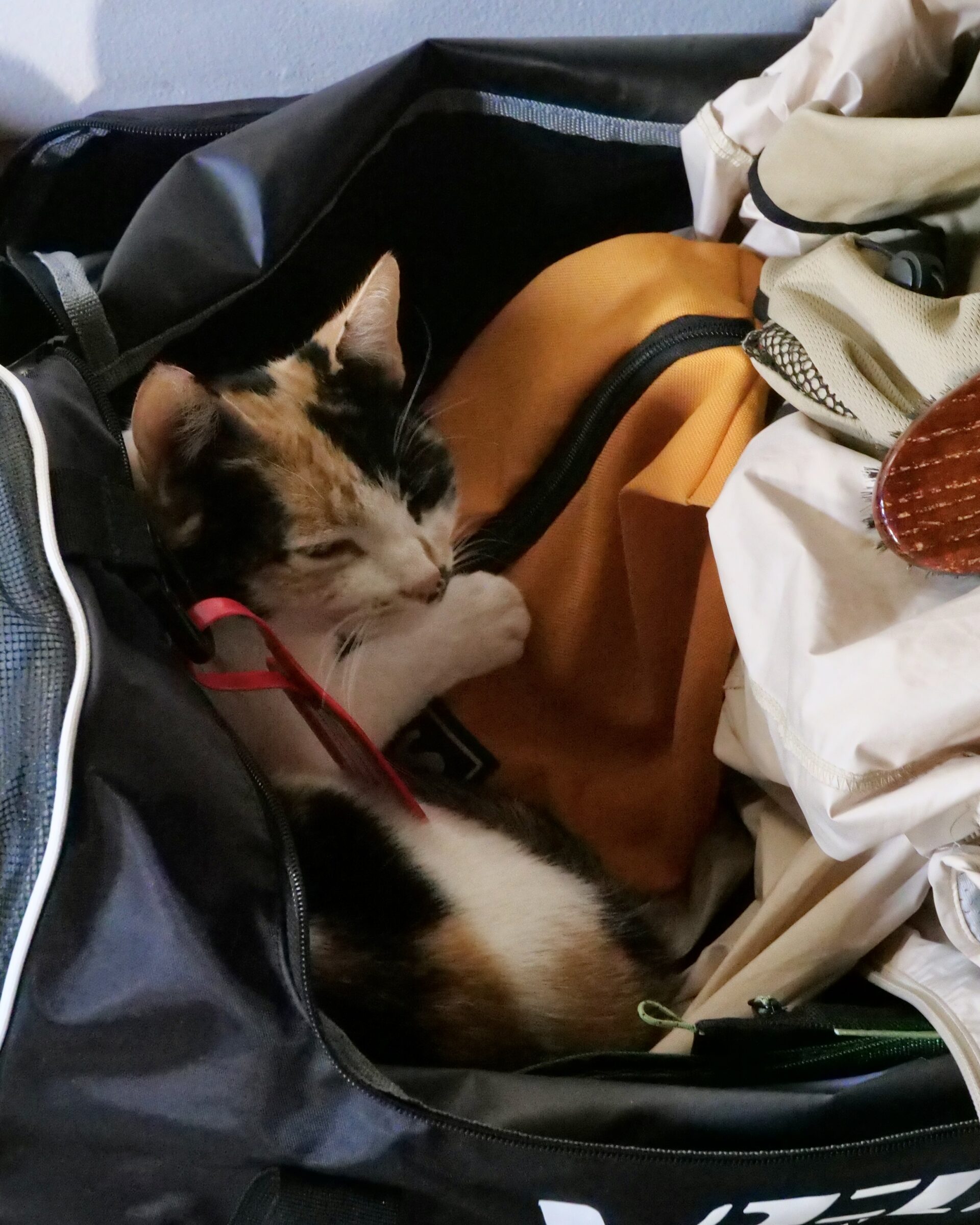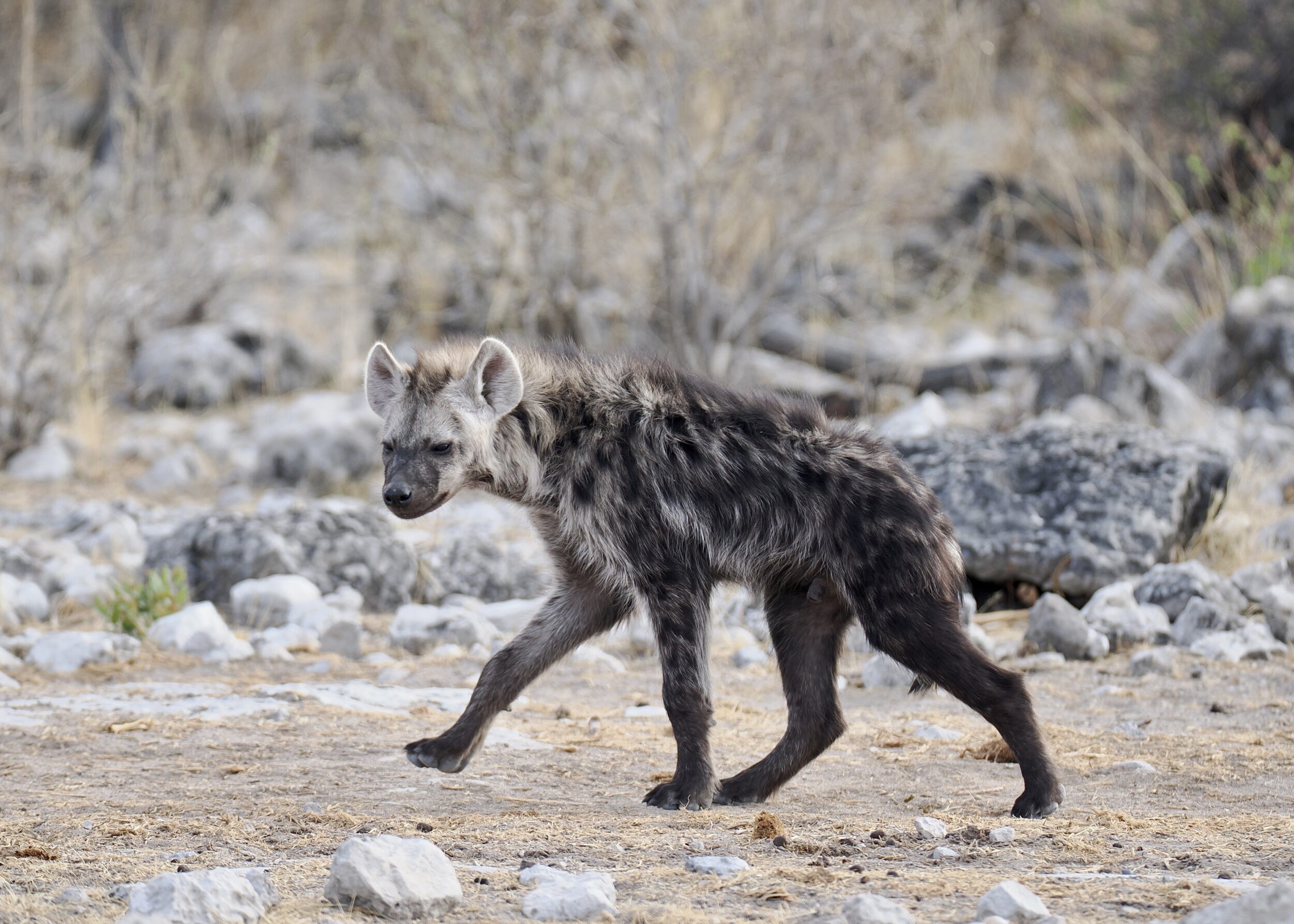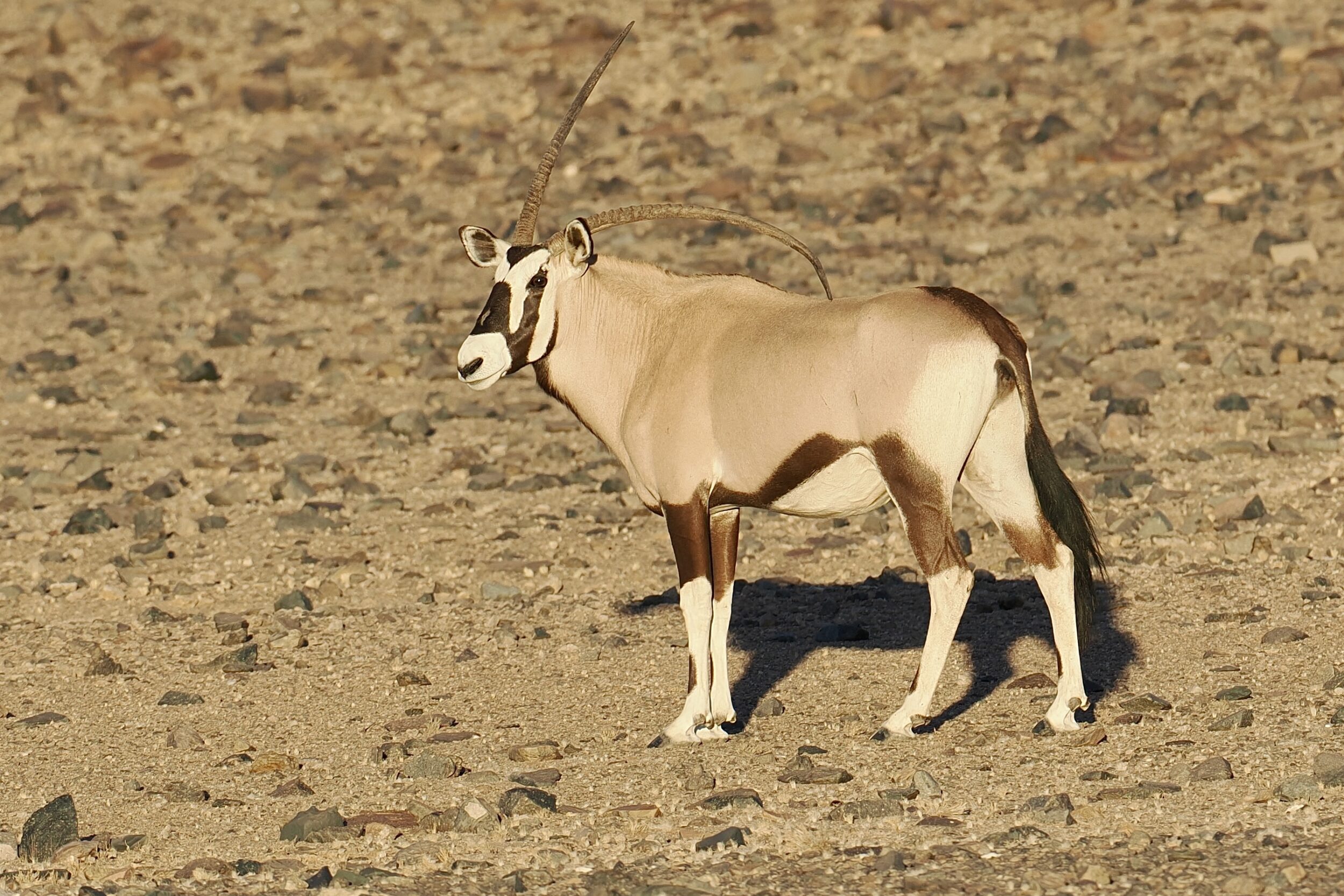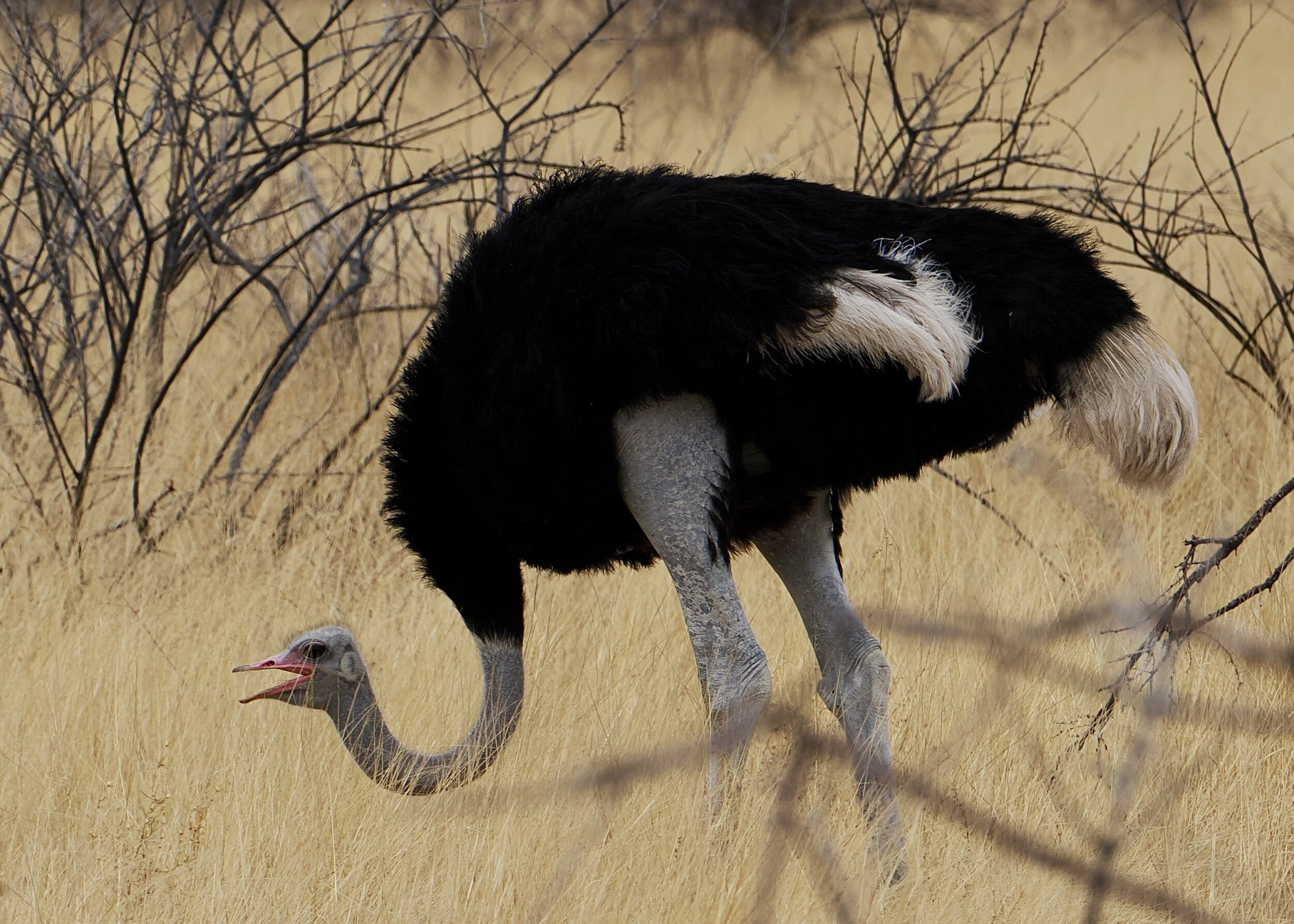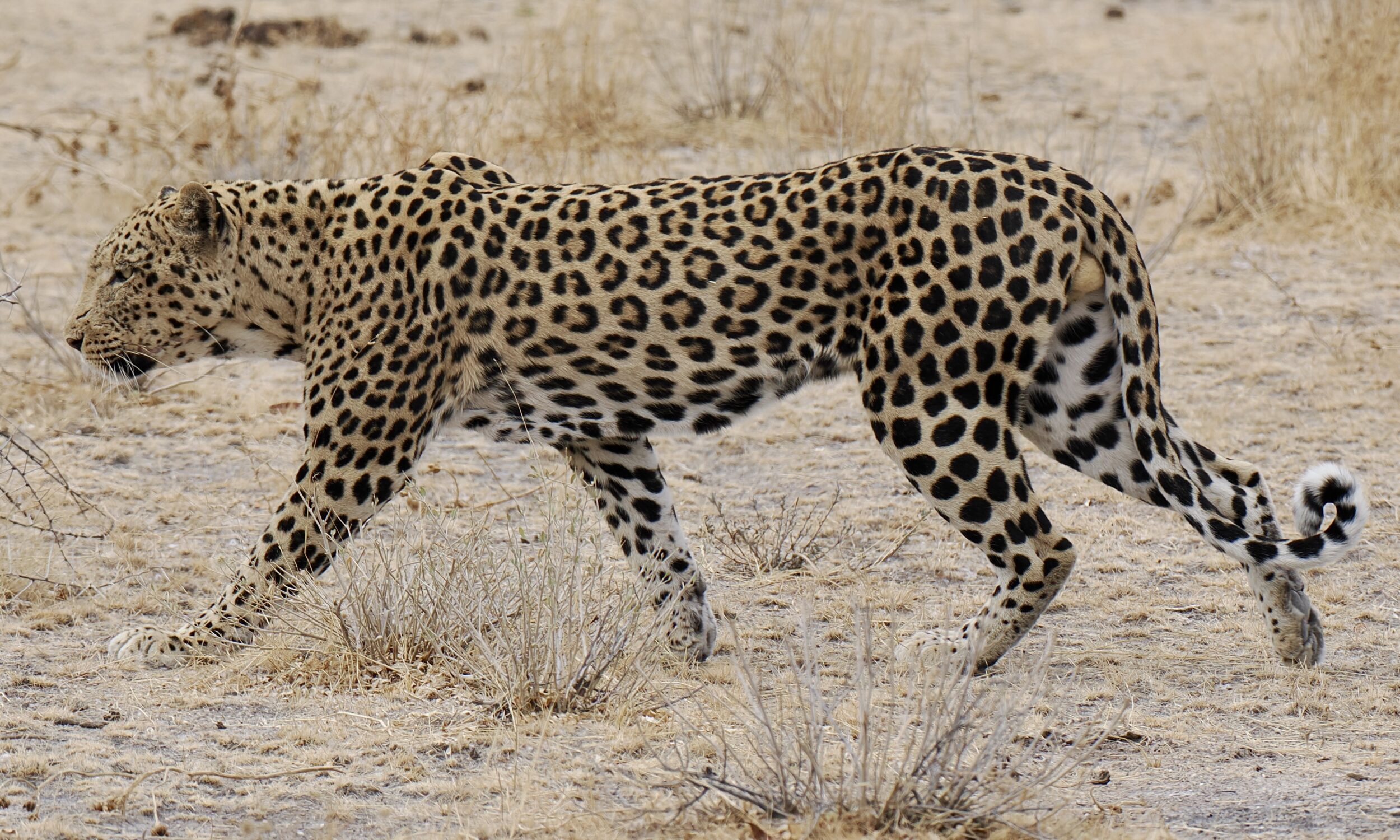I really loved the pictured signpost.
We did indeed see Jimbo, not very many metres away from it; neither he nor we encroached upon the other’s “personal space”.
Jimbo himself will star in this little trilogy’s second chapter.
“3” will feature some other desert-adapted elephants; their behaviour was much more unexpected/unusual.
All three chapters involve the same northwestern Namibian location, inland from the Skeleton Coast.
Overlooking the sweeping northern Damaraland landscape, the peaceful oasis of Palmwag Lodge & Campsite is set amid swaying palms, robust mopane trees and rich red rock.
Comments closed